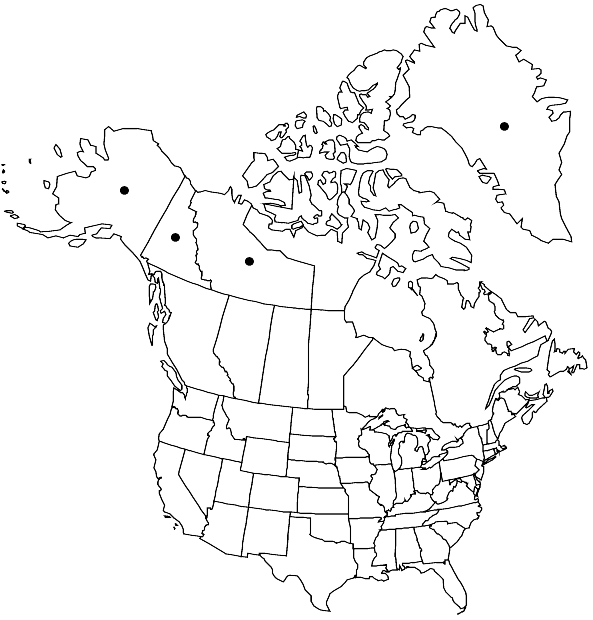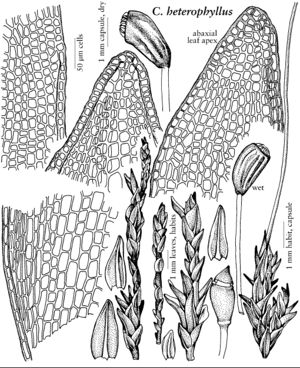Difference between revisions of "Ceratodon heterophyllus"
Ottawa Naturalist 5: 179. 1892,.
FNA>Volume Importer |
FNA>Volume Importer |
(No difference)
| |
Revision as of 21:54, 16 December 2019
Plants in dense tufts or mats, green to dark green to brownish green. Stems 0.3–1 cm. Leaves loosely imbricate, somewhat contorted when dry, ovate to ovate-lanceolate, concave and often somewhat cucullate, (0.35–)0.5–0.9(–1.5) mm, margins plane to weakly recurved, often only at mid-leaf, and entire to, rarely, weakly toothed distally, apices obtuse; most costae ending before apex; medial laminal cells (9–)12–16(–22) µm, thin-walled to somewhat thickened. Seta (0.9–)1.5(–2.5) cm, red. Capsule ovate-cylindric to, occasionally, ovate, (0.9–)1–1.2(–1.5) mm, strongly sulcate when dry; peristome segments free at their nodes, finely papillose, dark red with pale borders to, rarely, completely pale. Spores (18–)19–21(–22) µm.
Phenology: Capsules mature early summer–late fall.
Habitat: Sandy, usually moist soil, Arctic habitats
Elevation: low elevations (0-200 m)
Distribution

Greenland, N.W.T., Yukon, Alaska, Eurasia.
Discussion
In Northwest Territories, Ceratodon heterophyllus is found only on Prince Patrick Island.
Ceratodon heterophyllus has also been treated as C. purpureus forma heterophyllus (Kindberg) Britton, and R. R. Ireland (1980) considered it to be a variety of C. purpureus, but J. S. Burley and N. M. Pritchard (1990) provided ample evidence that it is a distinct species. The broadly ovate leaves of C. heterophyllus grade into some alpine variations of C. purpureus.
